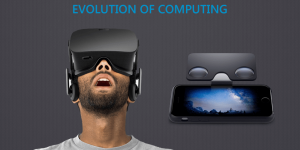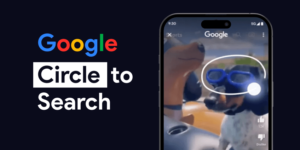
You’ve probably heard of Web3, and why not? After all, Web 3.0 is the next step in the evolution of the Internet. It aspires to make the Internet more intelligent. Since its inception, the World Wide Web has been evolving, introducing new tools and methods. These stages are commonly referred to as Web 1.0, 2.0, and 3.0.
In this post, we will discuss everything you need to know about web 3.0. But, to comprehend Web 3.0, we must first comprehend Web 1.0 and Web 2.0.
Here we go…
Web 1.0
It is the first stage of the Web’s evolution, also referred to as the read-only Web. Websites on Web 1.0 were not as interactive and engaging as they are now. The websites’ main purpose was to make information available to people worldwide. The transition from Web 1.0 to 2.0 took place over time as servers improved, average connection speeds increased, and developers developed new skills and approaches.
Limitations of Web 1.0: Web 1.0 was only the read-only Web and had a lot of space for improvement.
Web 2.0
The second stage of the Web’s evolution is web 2.0, also referred to as the read-write Web. Naturally, it’s a more advanced version of the first World Wide Web. With the move from static to dynamic or user-generated content and the rise of social media web 2.0 is way better than web 1.0.
Some of the examples of Web 2.0 include Facebook, Twitter, Google Maps, WordPress, YouTube, and so on.
Limitations of Web 2.0
Web 2.0 had certain limitations, and security is one of the most serious challenges with Web 2.0. Countries worldwide have their cyber security budgets set aside. It is critical to maintaining security! Another fundamental flaw in Web 2.0 is that one of its core values, decentralization, has been lost. Google, Amazon, Facebook, and a handful of other mega-corporations now dominate the Internet. The Internet was created with the intention of providing everyone with equal access to data and communication. Instead, these major firms have been gathering and abusing consumer data for their own financial gain.
Now that you have a basic idea of the Web’s growth and previous stages let’s now understand what Web 3.0 is.
Web 3.0
It is the third stage of the Web’s development, often known as the read-write-execute stage, and it relates to the Web’s future. Artificial Intelligence (AI) and Machine Learning (ML) allow computers to understand data in the same manner that humans do. Decentralized peer-to-peer networks such as IPFS and Ethereum are used to create Web 3.0 apps, often known as DApps. Rather than being developed, operated, and maintained by a company, their users build, operate, and maintain these networks.
Many of these technologies use cryptocurrency, which is why cryptocurrencies are frequently mentioned in relation to Web 3.0. Anyone who wishes to assist in building, managing, or improving one of the projects will be compensated financially.
These protocols provide a wide range of services, including computation, bandwidth, identity, storage, hosting, and other internet services that cloud service providers provide.
Difference between Web 1.0, 2.0, and 3.0?
Before we can go deeper into web 3.0, let’s understand the difference between web 1.0, web 2.0, and web 3.0.
- Web 1.0: Web 1.0 is a read-only web that allows users to read the information on websites.
- Web 2.0: Web 2.0 is a read-write web in which users can read and write information on websites and apps.
- Web 3.0: Web 3.0 is a read-write-interact web (driven by artificial intelligence). It allows users to read, write, and interact with material on websites and apps, including 3D visuals.
What distinguishes Web 3.0 from previous versions?
The most notable benefit of Web 3.0 is that it tries to address the most significant issue that has arisen as a result of Web 2.0, which is security—private networks collecting personal data, which is subsequently sold to marketers or potentially stolen by hackers.
The Web 3.0 network is also decentralized, meaning a single body does not control it, and the decentralized applications (apps) built on top of it are open.
Web 3.0 Characteristics
Three major qualities of Web 3.0 are as follows:
- Semantic Web
The semantic web is one of the most important aspects of Web 3.0. The semantic Web improves internet technology by allowing people to produce, share, and connect content through search and analysis based on understanding the meaning of words rather than keywords or numbers. - 3D Graphics
Web 3.0 websites and services, including e-commerce, online games, and portfolio websites, make extensive use of 3D graphics for the best user experience. - Artificial Intelligence
Besides Semantic Web, the other mainstay of web 3.0 is Artificial Intelligence. Web 3.0 enables computers to grasp the material in the same manner that people do by integrating this capability with natural language processing, resulting in faster and more relevant results. They become increasingly SMART in order to suit the demands of consumers.
Why is Web 3.0 Important?
Web 3.0 affects everyone whosoever uses the Internet, from small enterprises to MNCs, large corporations, government organizations, and so on. It provides users with:
- Complete Privacy
- Better security against cybercriminals
- User control over their data
- Faster and more efficient
- More adaptable to changes
- User-centric control
- Better user interactions with the Internet
How Does Web 3.0 Work?
Web 3.0’s prime objective is to make Internet searches much faster, simpler, and more efficient. In a web 2.0 application, a user must connect with the front-end, which interfaces with the backend and communicates with the database. Consumers receive the whole code via a web browser after it is saved on centralized servers.
Users no longer need to create separate personal profiles for multiple platforms with web 3.0. A single profile can be used on any platform, and the user retains complete control over any data. No corporation can access or verify the accuracy of users’ data without their authorization.
How Will Web 3.0 Change the Future of the Internet?
With web 3.0, users can have individualized interactions with machines and websites in the same way that you would with any other human. Here are the reasons Web 3.0 will become increasingly essential:
- Less reliance on centralized repositories: Web 3.0 aims to make the Internet a more diversified source, reducing the risk of hackers, leaks, and reliance on centralized repositories. Users will be able to own their own data and digital footprints thanks to verifiable data scarcity and tokenized digital assets. No platform will be held liable for how data is used.
- More personalized interactions: It allows consumers to have customized and tailored web surfing experiences.
- Less reliance on middlemen: It will aid in the disintermediation of enterprises, removing rent-seeking intermediaries, and directly transferring value to customers and providers in a network.
- Increased peer-to-peer connectivity: It helps keep the connection between members and organizations innately resilient, allowing for more responsive peer-to-peer engagement and governance. This will allow users to share more data while maintaining more privacy and security.
- Better AI-powered search assistance: Increased demand for humanized digital search assistants that are significantly more intelligent, widespread, and powered by semantics, blockchain, and AI.
- Increased trust: It will allows users to have more trust by lessening reliance on individual platforms and future-proof entrepreneurial and investment activities.
- User-centric control: Because of their decentralized structure, businesses would be very user-centric and transparent.
- Blockchain technologies: To assure data transparency and open access, business owners would have to adopt blockchain technologies.
Evolution of digital marketing with web 3.0
Marketing is one of the important aspects of any business. With more and more companies going online, digital marketing has become an integral part of a business. With web 3.0, a marketing revolution is on the horizon.
Web 3.0 is the next step in the Internet’s evolution, bringing together website content and users through unified interfaces and communication channels.
With Web 3.0, more and more organizations prefer to provide a better-tailored experience to their customers that can be accessed on any device or screen size and enables real-time data exchange.
Industry Using Web 3.0
Web 3.0 is already in use in education, social networking, virtual assistance, messaging, exchange services, and so many other fields.
Even you use it most of the time.
Wondering how?
Of course, with the help of smart gadgets at home.
Here is an example: To check the availability of goods in your home while you’re at work, you immediately ask your digital assistant to check the contents of your fridge by interacting with your house’s interconnected smart gadgets, and you get all the information. Aside from that, these smart devices can be used to plan a weekend party, do housekeeping tasks, and even secure your home.
Real-World Examples of Web 3.0
Here are some of the best examples of Web 3.0
- Siri
Siri is Apple’s personal assistant. It’s voice recognition software. Siri is one of the examples of web 3.0. It is used to communicate, share information (through linked blocks), and present consumers with more useful search results for any meaningful inquiry, such as how to, why, and what. Previously, Siri could only perform basic tasks leveraging pre-programmed algorithms, such as reminders and directions to the nearest grocery shop. But today, it’s smart! - e-Chat
e-Chat is a decentralized web 3.0 software that is backed by a blockchain. It is primarily a secure messenger, but it is also the fastest-growing social network. Users can share any data across the platform without being fearful of it being stolen. It’s commonly used to send cryptocurrencies. The e-Chat app is available on App Store, where you can download it from. - Wolfram Alpha
Wolfram Alpha is a computer program developed by Wolfram Research. It is a web 3.0-based computational intelligence platform. Users’ answers in subjects such as mathematics, nutrition, and science can be computed using the platform. It instantly interacts with other apps to get data from their databases and organizes it for end-users. As a result, it is now faster and more accurate than it was previously with web 2.0. Siri frequently uses Wolfram Alpha.
So this is all about the Web 3.0. We hope this information has been enlightening for you. Feel free to share this blog with others and spread knowledge across the community.
Have any queries? Leave a comment ☺






